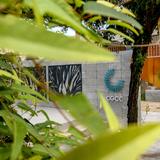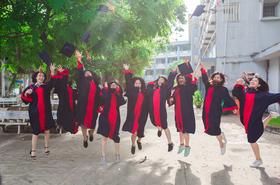- Central Arizona College provides a vibrant environment centered on learning and learner success. Our diverse college community values the power of innovation, continuous quality improvement and the contribution of the individual. Our commitment is to act as a catalyst for economic and cultural vibrancy and to inspire individuals to pursue their unique goals.
School Highlights
Central Arizona College serves 7,853 students (19% of students are full-time).
The college's student-teacher ratio of 16:1 is lower than the state community college average of 22:1.
Minority enrollment is 61% of the student body (majority Hispanic), which is equal to the state average of 61%.
Quick Facts (2025-26)
- Enrollment: 7,853 students
- In-state tuition: $2,400
- Out-state tuition: $10,440
- Student-teacher ratio: 16:1
- Minority enrollment: 61%
- Source: Integrated Postsecondary Education Data System (IPEDS)
School Overview
The teacher population of 497 teachers has stayed relatively flat over five years.
Central Arizona College
(AZ) Community College Avg.
Carnegie Classification
Associate's Colleges: High Transfer-Mixed Traditional/Nontraditional
Baccalaureate/Associate's Colleges: Mixed Baccalaureate/Associate's
Institution Level
At least 2 but less than 4 years
At least 2 but less than 4 years
Institution Control
Public
Public
Year Founded
1969
Colors
Green and gold
Total Faculty
497 staff
202 staff
Student Body
The student population of Central Arizona College has grown by 63% over five years.
The student-teacher ratio of 16:1 has increased from 8:1 over five years.
The Central Arizona College diversity score of 0.68 is less than the state average of 0.71. The school's diversity has stayed relatively flat over five years.
Total Enrollment
7,853 students
5,392 students
Student-Teacher Ratio
16:1
22:1
# Full-Time Students
1,501 students
1,208 students
# Part-Time Students
6,352 students
4,184 students
# Enrollment Undergraduate
785 students
339 students
# Full-Time Undergraduate Students
1,501 students
1,238 students
# Full-Time Graduate Students
n/a
66 students
# Part-Time Undergraduate Students
6,352 students
5,400 students
# Part-Time Graduate Students
n/a
11 students
Total Dormitory Capacity
250 students
250 students
% American Indian/Alaskan
3%
3%
% Asian
2%
4%
% Hispanic
40%
36%
% Black
8%
7%
% White
39%
39%
% Hawaiian
n/a
2%
% Two or more races
3%
4%
% Non Resident races
1%
1%
% Unknown races
3%
4%
Diversity Score
0.68
0.71
College Completion Rate (Students who graduate in less than 4 years)
18%
49%
College Completion Rate (Students who graduate in 4 years or more than 4 years)
n/a
60%
Average Graduate Earnings (10 Years)
$31,100
$32,900
Tuition and Acceptance Rate
The public in-state tuition of $2,400 is less than the state average of $3,445. The in-state tuition has declined by 6% over four years.
The public out-state tuition of $10,440 is more than the state average of $8,201. The out-state tuition has grown by 102% over four years.
In-State Tuition Fees
$2,400
$3,445
Out-State Tuition Fees
$10,440
$8,201
Tuition Notes
$75.00 per credit for Arizona Residents.
% Students Receiving Some Financial Aid
73%
82%
Median Debt for Graduates
$10,308
$9,500
Median Debt for Dropouts
$5,755
$4,750
Acceptance Rate
n/a
100%
Source: 2024 (or latest year available) Integrated Postsecondary Education Data System (IPEDS) , School Administrators
School Notes
- School Mascot: Cowboy, Vaqueras, Vaqueros
- Central Arizona College provides a vibrant environment centered on learning and learner success. Our diverse college community values the power of innovation, continuous quality improvement and the contribution of the individual. Our commitment is to act as a catalyst for economic and cultural vibrancy and to inspire individuals to pursue their unique goals. Central Arizona College is accredited by the Higher Learning Commission, a commission of the North Central Association of Colleges and Schools and a participant of the Higher Learning Commission's Academic Quality Improvement Program. Central currently offers more than 50 university transfer programs and nearly 90 occupational and technical degrees and certificates, with many courses available online and on nights and weekends. The University Center, located at the Signal Peak campus, has been established by Central Arizona College as a means of providing Pinal County residents local, direct access to upper division programs and advanced degrees. This will be accomplished through the development of one or more partnerships with both private and public universities that will provide bachelor's degrees, master's degrees and continuing professional studies at the University Center. The two-story center has state-of-the-art multi-media capabilities, including interactive television classrooms. Other programs includes GED Classes and Testing, Tech Prep for High School Students, English as a Second Language and others special programs.
Frequently Asked Questions
How much does Central Arizona College cost?
Central Arizona College's tuition is approximately $2,400 for In-State students and $10,440 for Out-State students.
School Calendar
View the Central Arizona College yearly calendar below.
Recent Articles

How to Transfer from Community College to a Four-Year University in 2025
A step-by-step guide for community college students transferring to a four-year university in 2025 — updated strategies, data and expert insights.

Scholarships for Community College Students 2025
Explore updated scholarship programs, tuition data, and expert strategies for community college students in 2025.

The Rise of Technical and Vocational Training in 2025
Explore the 2025 surge in technical and vocational training—enrollment, policy, costs, and why this path is gaining ground for students and parents.











